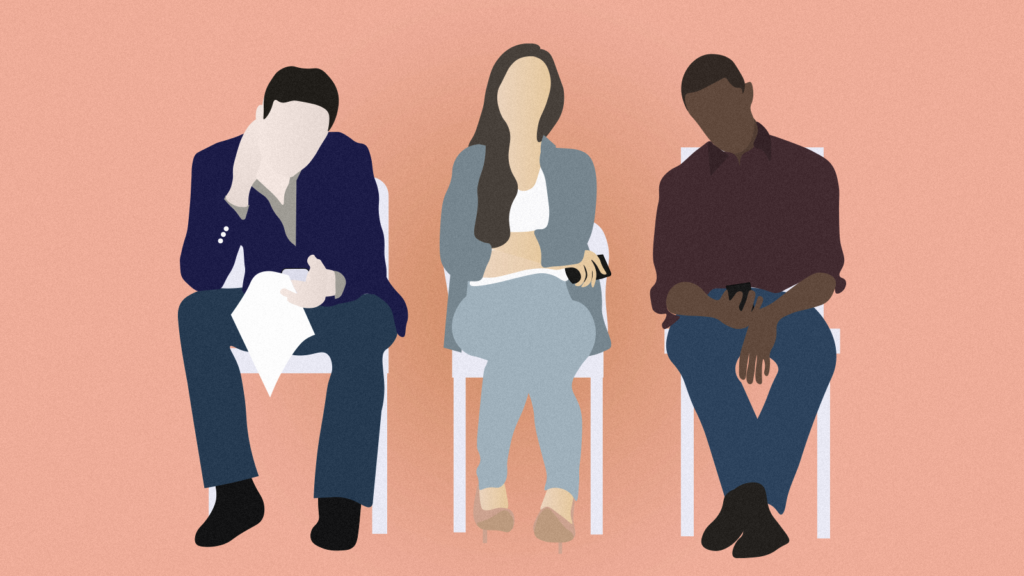
Non-verbal communication is all about sending messages without using words. It can be just as powerful (or even more powerful) than what we say with our mouths!
Types of Non-Verbal Communication
- Body Language
This is how we move our bodies to express ourselves. For example, when you cross your arms, it might mean you’re feeling defensive or closed off. If you stand up straight with your shoulders back, it shows confidence. - Facial Expressions
Your face is one of the most expressive parts of your body. A smile can show happiness, while a frown might indicate you’re upset or confused. Even without saying anything, people can usually tell how you feel just by looking at your face. - Gestures
Gestures are movements with your hands or arms. For example, waving to say “hi” or “bye,” or giving a thumbs up to show approval. These simple movements help get a message across without speaking. - Eye Contact
When you look someone in the eyes, it can show that you’re interested in what they’re saying, or that you’re being honest. But if you avoid eye contact, people might think you’re nervous, unsure, or hiding something. - Posture
How you stand or sit can tell others about your mood. Slouching might show you’re tired or disinterested while sitting up straight could show you’re engaged or serious. - Space (Proxemics)
This refers to how close or far away you stand from someone. If you stand too close, it might make others feel uncomfortable, but if you stand too far, it might seem like you’re not interested. Different cultures have different rules about personal space. - Touch
A pat on the back or a high five can communicate support or congratulations. But touch can also be uncomfortable if it’s not welcome, like someone grabbing your arm too tightly. - Tone of Voice
Even though it’s still a form of speech, the tone or pitch of your voice matters a lot. Speaking with excitement or enthusiasm shows you’re happy, while speaking softly or in a low voice might suggest you’re feeling sad or unsure. - Appearance
How you dress, your hairstyle, and how you present yourself can send a message about your personality or mood. For instance, wearing formal clothes can make you seem professional, while casual clothes can show you’re laid-back.

Non-verbal communication is super important because it helps people understand you better, even when you’re not saying anything!
More Resources
Learning Activities
Nonverbal Communication Charades
- Activity:
- You will be given a list of emotions or situations (e.g., happy, confused, angry, excited, frustrated, etc.).
- Everyone will take turns acting out the word or phrase using only body language, facial expressions, and gestures.
- The rest of the group guesses what emotion or situation is being portrayed.
- Reflection: After each round, discuss how different gestures or expressions helped convey the message. Was it hard or easy to understand?
Mirroring Exercise
- Activity:
- All students will be paired up. One will be the “leader,” and the other will be the “mirror.”
- The leader will perform a series of movements, gestures, or facial expressions (e.g., walking, gesturing, sitting down).
- The “mirror” has to replicate the leader’s actions as accurately as possible, as though they are a reflection.
- Reflection: Discuss the importance of observing others’ body language closely. How does it feel to lead and follow movements?
The Silent Conversation
- You will have to engage in a conversation using only nonverbal cues like facial expressions, gestures, and body language.
- Scenarios will be set where you need to communicate without speaking, such as “Ordering food at a restaurant” or “Having a disagreement with a friend.”
- After the activity, discuss the challenges of relying solely on nonverbal communication. Were you able to convey your ideas clearly?
Posture and Confidence
- Activity:
- We will start by having a conversation about the impact of body posture on how others perceive us (e.g., slouching vs. standing tall).
- You will be asked to stand in two different postures: one where you feel confident and one where you feel unsure or insecure.
- Afterward, walk around the room in both postures and notice how your movements and presence change.
- Reflection: Discuss how posture can influence how we are seen by others and how we feel about ourselves.
